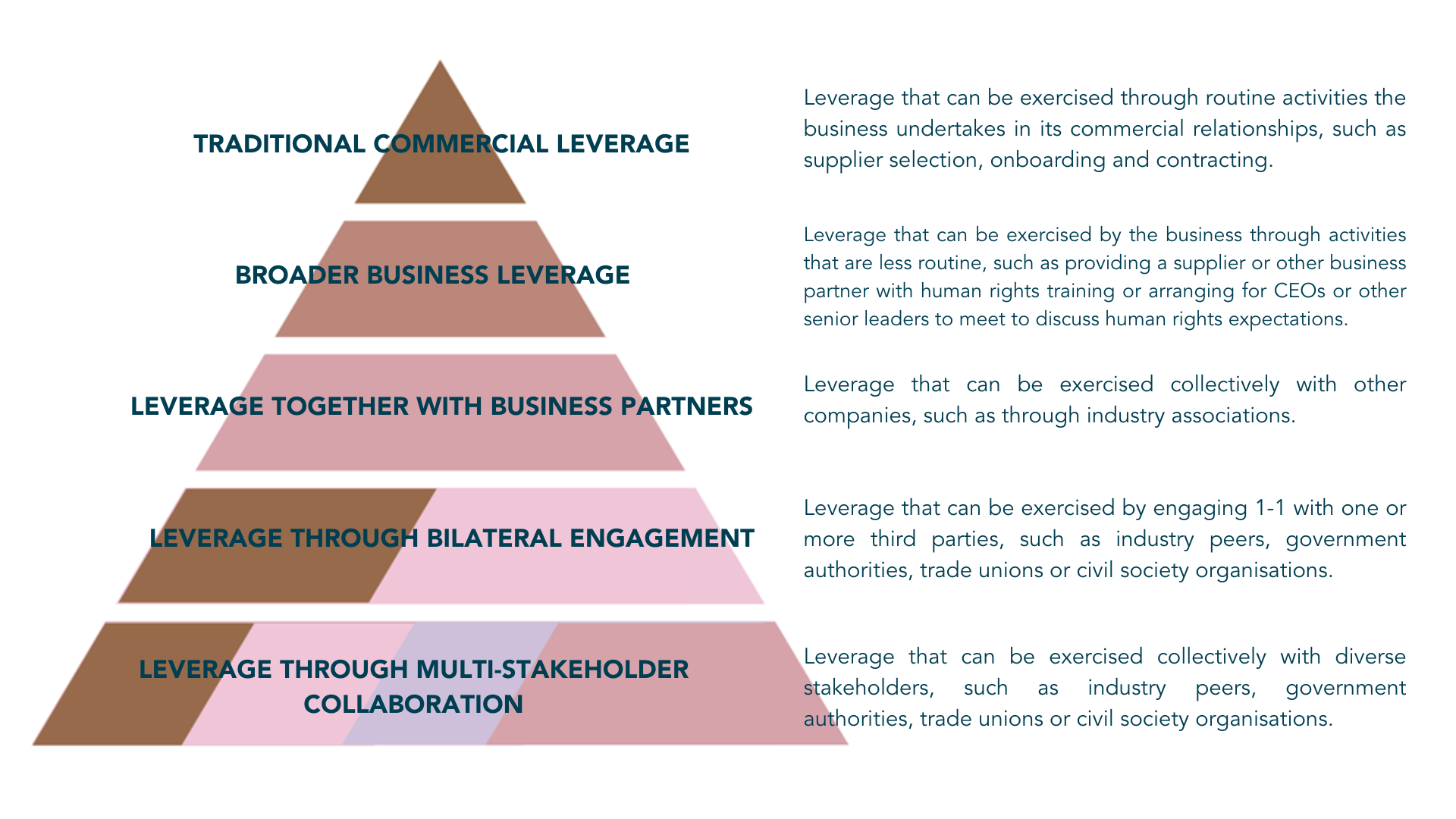The aim of the "Beyond audits in copper supply chains: Using leverage to prevent and address copper-specific salient human rights issues" guidance is to suggest practical actions that businesses in the automotive sector can take to prevent and address adverse human rights risks and impacts in their copper supply chains in ways that complement and go beyond the implementation of audits and certification schemes.
The core of this guidance note focuses on how mid- and downstream companies in the automotive sector can build and exercise their leverage to effectively prevent and address severe adverse human rights risks and impacts (“salient human rights issues”) at the extraction (mining) level of the copper supply chain. Illustrative examples are included throughout, drawing on experiences from businesses within and beyond the copper supply chain.
The development of this guidance has been prompted by recognition that businesses in the automotive sector and their copper supply chains confront a broad range of human rights risks and impacts (see section II). Many of the salient human rights issues associated with the copper supply chain are located in the more upstream tiers of the supply chain. This means that in order to effectively manage these salient issues, mid- and downstream actors in the automotive sector will have to work collaboratively with other actors to build and exercise leverage as a means to prevent and address issues that they themselves may not have actually or potentially caused, but are connected to via their supply chain business relationships.
Companies in the copper supply chain can use the five categories of leverage to consider the full range of options to prevent and address salient issues. The top two layers of the triangle may be less applicable to very downstream companies that do not have contractual (“direct”) relationships with suppliers that are very close to where salient issues are or could be occurring. However, a lack of a direct supplier relationship to actors causing adverse impacts, or difficulties in establishing traceability in the supply chain to these actors, does not absolve downstream companies from their duty of case in the exercise of due diligence. Furthermore, not all mid- or downstream automotive sector companies are so many tiers removed from the extraction tier, especially as an increasing number of companies in the automotive sector become more vertically integrated.

Research and practice over the past decade and more indicates that in order to prevent and address human rights impacts effectively, businesses may make use of audit and certification schemes, but they should be cautious about solely relying on them for all of their risk mitigation. This general finding also applies to the copper supply chain. For instance, analysis conducted in 2023 by Levin Sources for the copper project group indicates that a selection of audit and certification schemes used in the copper supply chain have some strengths but also limitations in terms of their likely ability to effectively manage common salient human rights issues in the copper supply chain. Readers can find further discussion of smart uses of audits and certifications in section IV-C. Where companies do use these schemes, they will need to be cognisant of their strengths and limitations, and consider how they can complement the schemes. Ideas on those complementary actions are the core purpose of this guidance note.
Beginning in section V, this note sets out theoretical guidance as well as illustrative examples of how a given type of leverage can be put into practice in the copper supply chain to address specific salient issues. An effective approach may draw on or combine multiple types of leverage. The guidance note also explains general principles regarding the choice to leave a business relationship if the leverage efforts have been unsuccessful.
Finally, the guidance note offers two case examples of building and exercising leverage that have relevance for managing salient issues at the extraction (mining) tier of the copper supply chain. There are currently limited examples of leading practice in building and using leverage to manage salient issues in upstream copper supply chains. Businesses and their stakeholders will have to exercise creativity in order to extrapolate ideas and learning from practices in other minerals supply chains or other sectors entirely – and perhaps come up with new approaches as well. This guidance note has been developed with the aim to foster such creative thinking and articulate pathways for mid- and downstream companies in the automotive sector to contribute to the effective management of salient issues in copper supply chains.
This guidance has been commissioned by the copper project group of the Sector Dialogue Automotive Industry, which has been convened by the German Federal Ministry of Labour and Social Affairs to advance implementation of Germany’s National Action Plan for Business and Human Rights.
Thumbnail photo Doc Searls, The Bingham Canyon Copper Mine in the Oquirrh Mountains in Utah.



